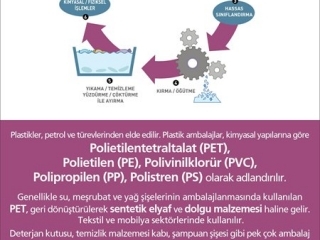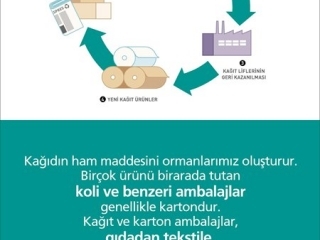Environment
Being environment friendly is a part of our culture.
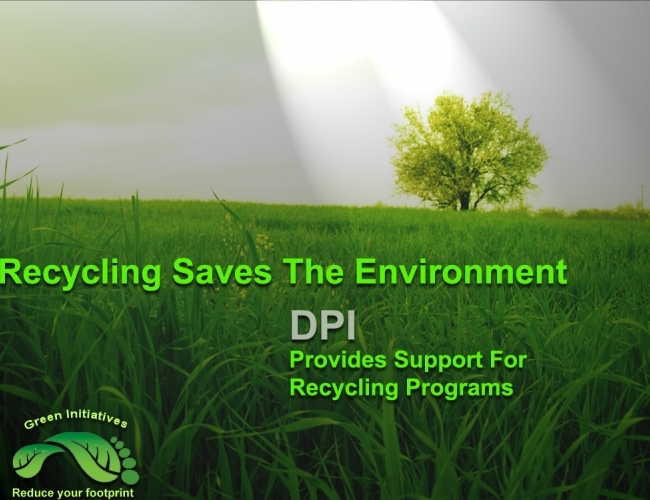
Being environment friendly is one of the priorities of the mission of DPI organization. In addition to comfort which comes into our live as a result of technological developments, the amount of damage given to nature and environment by these developments is also rapidly increasing each day. The fact these changes which are for making life perfect and providing healthier and a long life harm habitat, pollute soil, air and water, ruin the natural resources both in rural and urban areas turns into a reality in recent years. DPI organization develops policies in order to protect environment and preserve ‘eco-system’.
Environment Policy
Protecting environment is part of DPI’s daily operations.
· We are making worldwide business as being responsible to environment.
· Re-use and recycling of our packaging materials are possible.
· We are revising the drum unit and toner print cartridges.
· We dispose waste products with recycling and with environmental waste and regulations.
· We are using highly efficient ozone filters.
· We started worldwide Drum unit recycling programs two years ago.
· We are constantly developing applications for integrating environmental management to our decision making processes.
| · We choose business partners who support environmental objectives. |
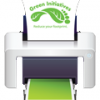 |
Standards, Compliance and Policies
DPI is working in accordance with the standards and policies decided in various countries in the world. These are National Standards and imperatives stated below;
ÇEVKO
 Çevre Koruma Ve Ambalaj Atıkları Değerlendirme Vakfı - ÇEVKO, İstanbul'da yerleşik bir Sivil Toplum Kuruluşu'dur. 1 Kasım 1992 tarihinde kurulan vakıf; ambalaj atıklarının geri kazanımında Türkiye'nin önde gelen yetkilendirilmiş kuruluşu olarak kalmak vizyonunu öngörmektedir. ÇEVKO, "Ambalaj ve Ambalaj Atıklarının Kontrolü Yönetmeliği" uyarınca, Çevre ve Orman Bakanlığı’nın 31.03.2005 tarihli kararı ile, her çeşit ambalaj atığının geri kazanımı konusunda "Yetkilendirilmiş Kuruluş" tur.
Çevre Koruma Ve Ambalaj Atıkları Değerlendirme Vakfı - ÇEVKO, İstanbul'da yerleşik bir Sivil Toplum Kuruluşu'dur. 1 Kasım 1992 tarihinde kurulan vakıf; ambalaj atıklarının geri kazanımında Türkiye'nin önde gelen yetkilendirilmiş kuruluşu olarak kalmak vizyonunu öngörmektedir. ÇEVKO, "Ambalaj ve Ambalaj Atıklarının Kontrolü Yönetmeliği" uyarınca, Çevre ve Orman Bakanlığı’nın 31.03.2005 tarihli kararı ile, her çeşit ambalaj atığının geri kazanımı konusunda "Yetkilendirilmiş Kuruluş" tur.REACH
 REACH REACH, kimyasalların kaydı, değerlendirilmesi, izni ve kısıtlanmasını öngören yeni bir Avrupa Birliği mevzuatıdır. 1 Haziran 2007’de yürürlüğe girmiştir ve bir dizi AB Yönetmelik ve Tüzüğünü kapsamakta ve onları tek bir sistem altında toplamaktadır. REACH’in bir kaç amacı vardır: Çevre ve insan sağlığını, kimyasal kullanımından yüksek düzeyde korumayı sağlamak. Kimyasalları piyasaya süren insanları (üretici ve ithalatçı / ihracatçı) kullanım amaçlarına ilişkin risklerin anlaşılması ve yönetiminden sorumlu tutmak. Maddelerin AB pazarında serbest hareketini sağlamak. AB kimya sanayiinde rekabetin ve yenilikçiliğin arttırılması. Maddelerin zararlı özelliklerinin değerlendirilmesi için alternatif yöntemleri özendirmek ör. QSAR ve read across.
REACH REACH, kimyasalların kaydı, değerlendirilmesi, izni ve kısıtlanmasını öngören yeni bir Avrupa Birliği mevzuatıdır. 1 Haziran 2007’de yürürlüğe girmiştir ve bir dizi AB Yönetmelik ve Tüzüğünü kapsamakta ve onları tek bir sistem altında toplamaktadır. REACH’in bir kaç amacı vardır: Çevre ve insan sağlığını, kimyasal kullanımından yüksek düzeyde korumayı sağlamak. Kimyasalları piyasaya süren insanları (üretici ve ithalatçı / ihracatçı) kullanım amaçlarına ilişkin risklerin anlaşılması ve yönetiminden sorumlu tutmak. Maddelerin AB pazarında serbest hareketini sağlamak. AB kimya sanayiinde rekabetin ve yenilikçiliğin arttırılması. Maddelerin zararlı özelliklerinin değerlendirilmesi için alternatif yöntemleri özendirmek ör. QSAR ve read across. RoHS
 The Restriction of Hazardous Substances Directive 2002/95/EC, RoHS, short for Directive on the restriction of the use of certain hazardous substances in electrical and electronic equipment, was adopted in February 2003 by the European Union.The RoHS directive took effect on 1 July 2006, and is required to be enforced and become law in each member state. This directive restricts (with exceptions) the use of six hazardous materials in the manufacture of various types of electronic and electrical equipment. It is closely linked with the Waste Electrical and Electronic Equipment Directive (WEEE) 2002/96/EC which sets collection, recycling and recovery targets for electrical goods and is part of a legislative initiative to solve the problem of huge amounts of toxic e-waste.
The Restriction of Hazardous Substances Directive 2002/95/EC, RoHS, short for Directive on the restriction of the use of certain hazardous substances in electrical and electronic equipment, was adopted in February 2003 by the European Union.The RoHS directive took effect on 1 July 2006, and is required to be enforced and become law in each member state. This directive restricts (with exceptions) the use of six hazardous materials in the manufacture of various types of electronic and electrical equipment. It is closely linked with the Waste Electrical and Electronic Equipment Directive (WEEE) 2002/96/EC which sets collection, recycling and recovery targets for electrical goods and is part of a legislative initiative to solve the problem of huge amounts of toxic e-waste.WEEE
 The Waste Electrical and Electronic Equipment Directive (WEEE Directive) is the European Community directive 2002/96/EC on waste electrical and electronic equipment (WEEE) which, together with the RoHS Directive 2002/95/EC, became European Law in February 2003. The WEEE Directive set collection, recycling and recovery targets for all types of electrical goods, with a minimum rate of 4 kilograms per head of population per annum recovered for recycling by 2009. The RoHS Directive set restrictions upon European manufacturers as to the material content of new electronic equipment placed on the market.
The Waste Electrical and Electronic Equipment Directive (WEEE Directive) is the European Community directive 2002/96/EC on waste electrical and electronic equipment (WEEE) which, together with the RoHS Directive 2002/95/EC, became European Law in February 2003. The WEEE Directive set collection, recycling and recovery targets for all types of electrical goods, with a minimum rate of 4 kilograms per head of population per annum recovered for recycling by 2009. The RoHS Directive set restrictions upon European manufacturers as to the material content of new electronic equipment placed on the market. ISO 14001
 The ISO 14000 family addresses various aspects of environmental management. It provides practical tools for companies and organizations looking to identify and control their environmental impact and constantly improve their environmental performance. ISO 14001:2004 and ISO 14004:2004 focus on environmental management systems. The other standards in the family focus on specific environmental aspects such as life cycle analysis, communication and auditing.
The ISO 14000 family addresses various aspects of environmental management. It provides practical tools for companies and organizations looking to identify and control their environmental impact and constantly improve their environmental performance. ISO 14001:2004 and ISO 14004:2004 focus on environmental management systems. The other standards in the family focus on specific environmental aspects such as life cycle analysis, communication and auditing.
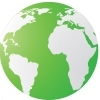
Recycling and Waste
DPI makes recycling and disposes environmental wastes according to Çevko policies.
Recommends that the paper be recycled and raw materials DPI..
